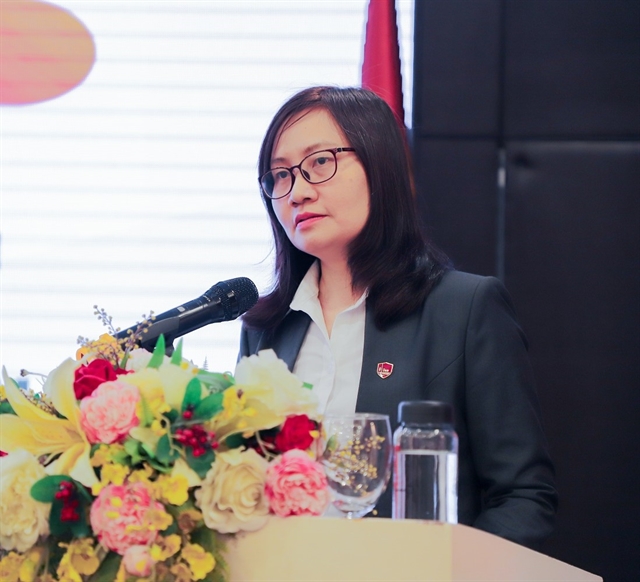 Economy
Economy

 |
| Associate Professor, Dr Nguyễn Anh Thu, Vice Rector of the University of Economics - Vietnam National University, Hà Nội |
After the COVID-19 pandemic, geopolitical conflicts, along with natural disasters have led to shortages of goods and raw materials, congestion of supply chains and higher container shipping costs. Therefore, global corporations are making efforts to diversify their supply chains to find safer and more sustainable options.
Associate Professor, Dr Nguyễn Anh Thu, Vice Rector of the University of Economics - Vietnam National University, Hà Nội, spoke to Vietnam News Agency about opportunities and challenges of moving supply chains to Việt Nam.
How do you assess the trend of corporations moving their supply chains to other countries in the same geographical area, or moving their production to their home country to avoid risks?
Trade tensions as well as global geopolitical conflicts are increasing transaction and transportation costs, leading to supply chain disruptions. Therefore, transaction costs for businesses participating in international trade activities are also increasing.
Besides that, participating in international trade and investment activities is much riskier than before. So, the corporations in the world tend to seek markets that are considered safe, as well as markets that ensure a truly flexible supply chain.
The emerging trends in the world include nearshoring, the trend of the outsourcing of business processes, especially information technology processes, to companies in a nearby country.
The second is 'friendshoring', the trend of manufacturing and sourcing from countries that are geopolitical allies.
The third is reshoring, the trend of transferring a business operation that was moved overseas back to the country from which it was originally relocated.
Southeast Asian countries and India are emerging as important alternative destinations in the trend of moving global supply chains. What do these countries offer?
These countries' potential is competitive labour costs compared to China.
In addition, some countries also have skilled workers who can meet high-skilled value chains. For example, India has both low-cost and highly-skilled labour in electronics and other services.
Second, these countries themselves are large-scale markets.
The third advantage is that some countries have fairly developed infrastructure and supporting industries that can meet the value chain when large corporations move there.
The case of India is an example. This country has quite good infrastructure and especially supporting industries in the fields of pharmaceuticals, electronics and distribution. They can meet the needs of large corporations.
Another important advantage is 'friendshoring', which is the trend of investing in countries which are their diplomatic, trade and political alliances. This is also the main advantage of countries such as India and some Southeast Asian countries.
Moving supply chains offers great opportunities to Việt Nam. What measures can companies take to help them promote their advantages when participating in the global value chain?
When the corporations move their supply chains and manufacturing plants to Việt Nam, Vietnamese enterprises will have great opportunities to enhance cooperation, as well as to participate more deeply in the global supply chains and to improve their position in those chains.
One of the opportunities is to supply products and services to these corporations. And if having chances to join to green value chains or sustainable value chains, Vietnamese enterprises could access new skills and management methods of those chains and at the same time find opportunities to manufacture suitable products for the global value chains.
Another opportunity for them is to improve management capacity and labour quality to meet the needs of large corporations and investors coming to Việt Nam.
In the long term, those opportunities would help Vietnamese businesses develop and participate more deeply in the global value chains.
To seize those opportunities, Việt Nam needs solutions in both macro and micro perspectives. The most important macro solution is to have a strategy to attract high value-added supply chains or advanced supply chains and businesses investing in technology, environmental services and green production in Việt Nam.
Especially, Việt Nam would attract foreign investment in priority sectors, but at the same time it must encourage Vietnamese businesses to invest in those sectors. This strategy must also be connected to regional development and linkages between regions in Vietnam.
The next solution is to invest in developing human resources to supply to those industries.
Việt Nam also needs long-term strategies to invest and find development directions for environmentally friendly industries or products that can meet global value chains. VNS




